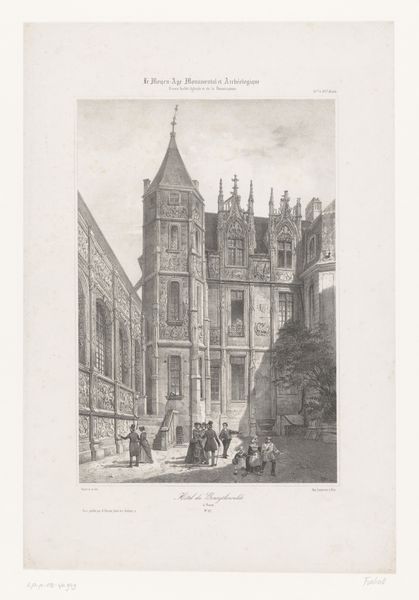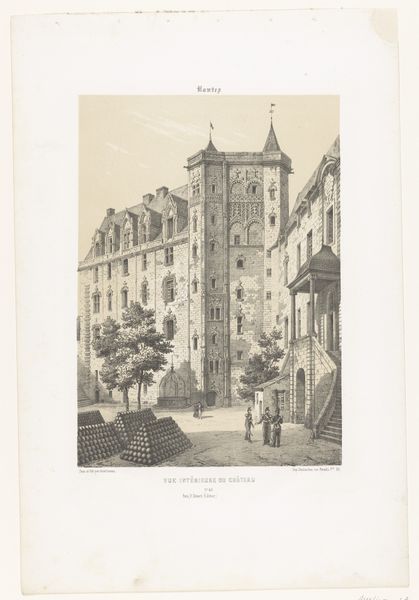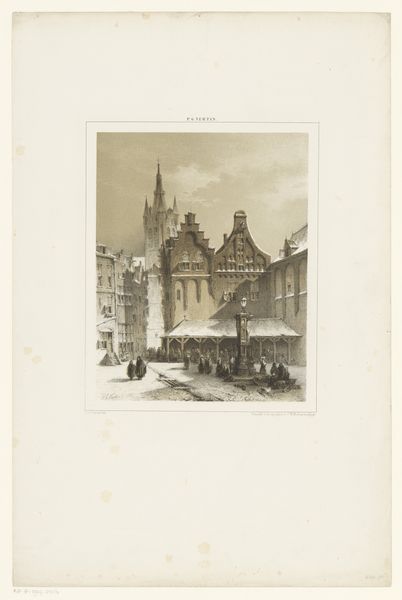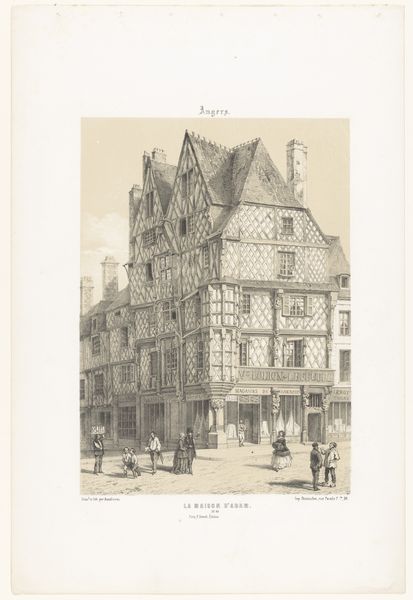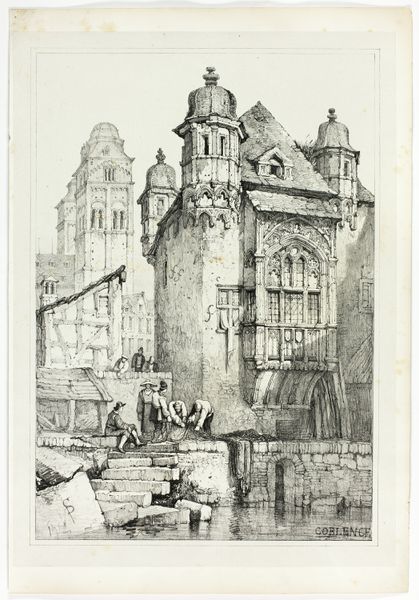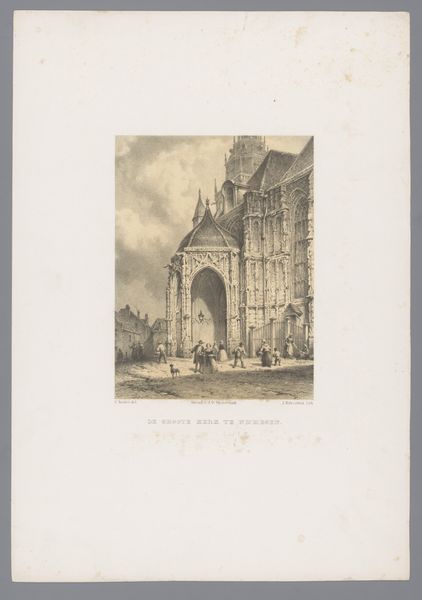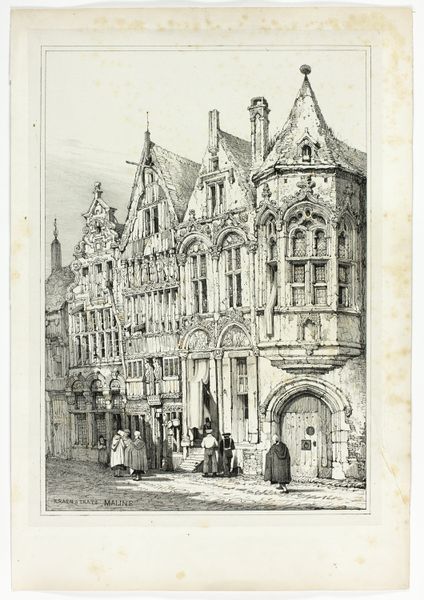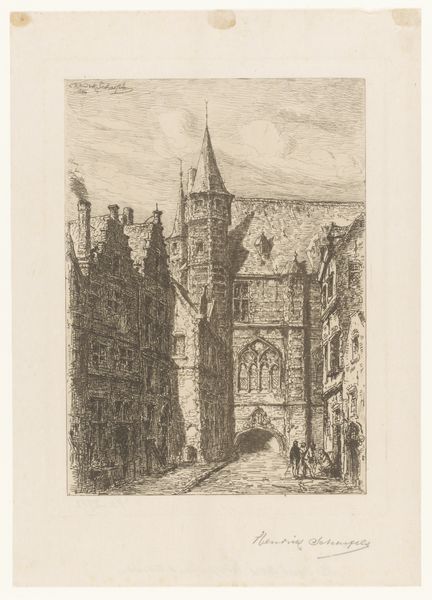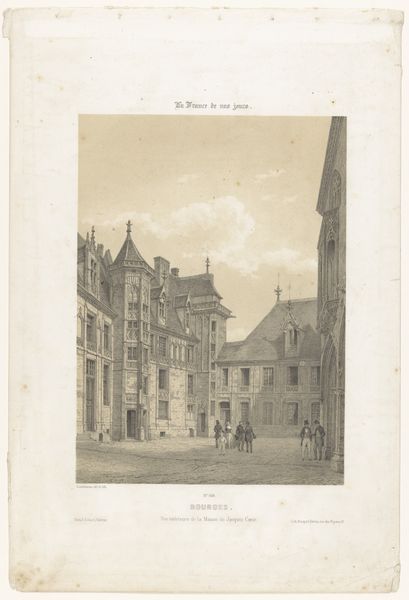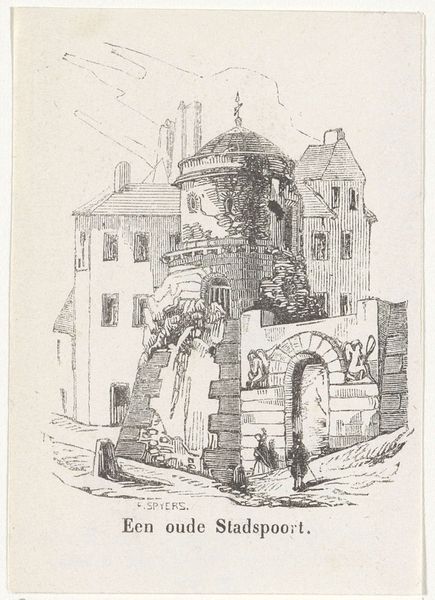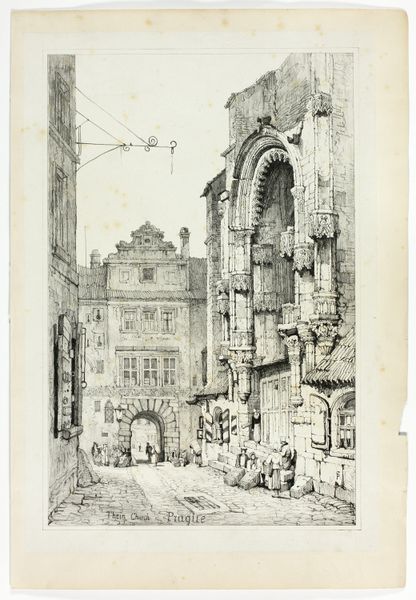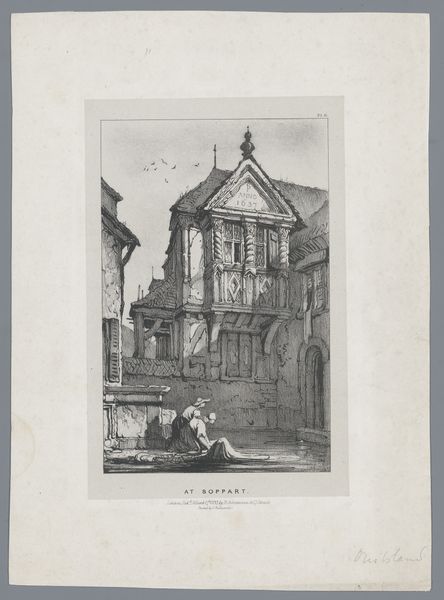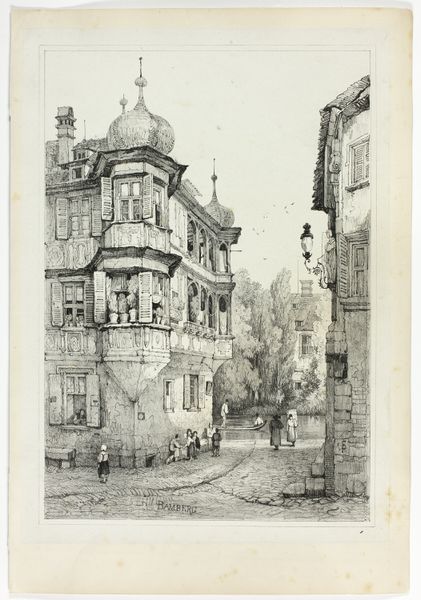
Dimensions: height 434 mm, width 291 mm
Copyright: Rijks Museum: Open Domain
Curator: Before us is Léon Auguste Asselineau's "View of Part of the Château d'Angers," an engraving dating between 1853 and 1856. The artwork resides here at the Rijksmuseum. Editor: My first impression is one of somber grandeur. The level of detail is astonishing, really; I can almost feel the cool, grey stone under my fingertips. But what about the making of the print? Curator: It's the kind of Romantic vision that emphasizes scale, harking back to the idealized past, all delivered through precise architectural detail. One almost imagines fairy tales unfolding within these very walls. Editor: I see the hand of industry so clearly, the repetitive lines created by the engraver's tools, the meticulous planning needed for each mark to suggest shadow, light, volume... These prints are part of a whole production and circulation chain of images for consumption. How else might it be used? Curator: Indeed! Consider how architectural forms—arches, turrets, windows—become symbolic resonators. A medieval structure inherently conveys authority, longevity, a sense of immutable presence across time and even dynasties. That the Chateau is here partially depicted adds to the mystery. What's omitted is almost as important as what's visible. Editor: You raise an interesting point about what's "visible." Prints allow multiple reproductions. Did this artist directly work the copper or did a print-maker work with his drawings? That divide can lead to a question of artistic integrity for some, the artist versus the printmaker, yet both are involved with shaping the image's reach to the culture. Curator: And look at the figures. They almost look like ghosts here as they stand still near an archway and a door: tiny, yet placed deliberately. Are they witnesses, occupants, or something else entirely? That question stays with me, really. The print feels like it’s less about bricks and mortar, more about lingering spirits. Editor: Seeing this print, the making of prints in general, makes me think of wider social conditions. As engravings allowed for architectural representations to reach mass audiences, this inevitably democratized knowledge. Who controlled such knowledge, who benefited from it and who was able to participate? A grand chateau captured in an intricate web of engraved lines, certainly speaks to social class too. Curator: An intricate, mediated record indeed! That's how symbols can echo, subtly transforming over time through technique and reproduction. Editor: Indeed. Material processes are never truly neutral but steeped in meaning and intention. Thank you, I’m going to view architecture prints differently from now on.
Comments
No comments
Be the first to comment and join the conversation on the ultimate creative platform.
